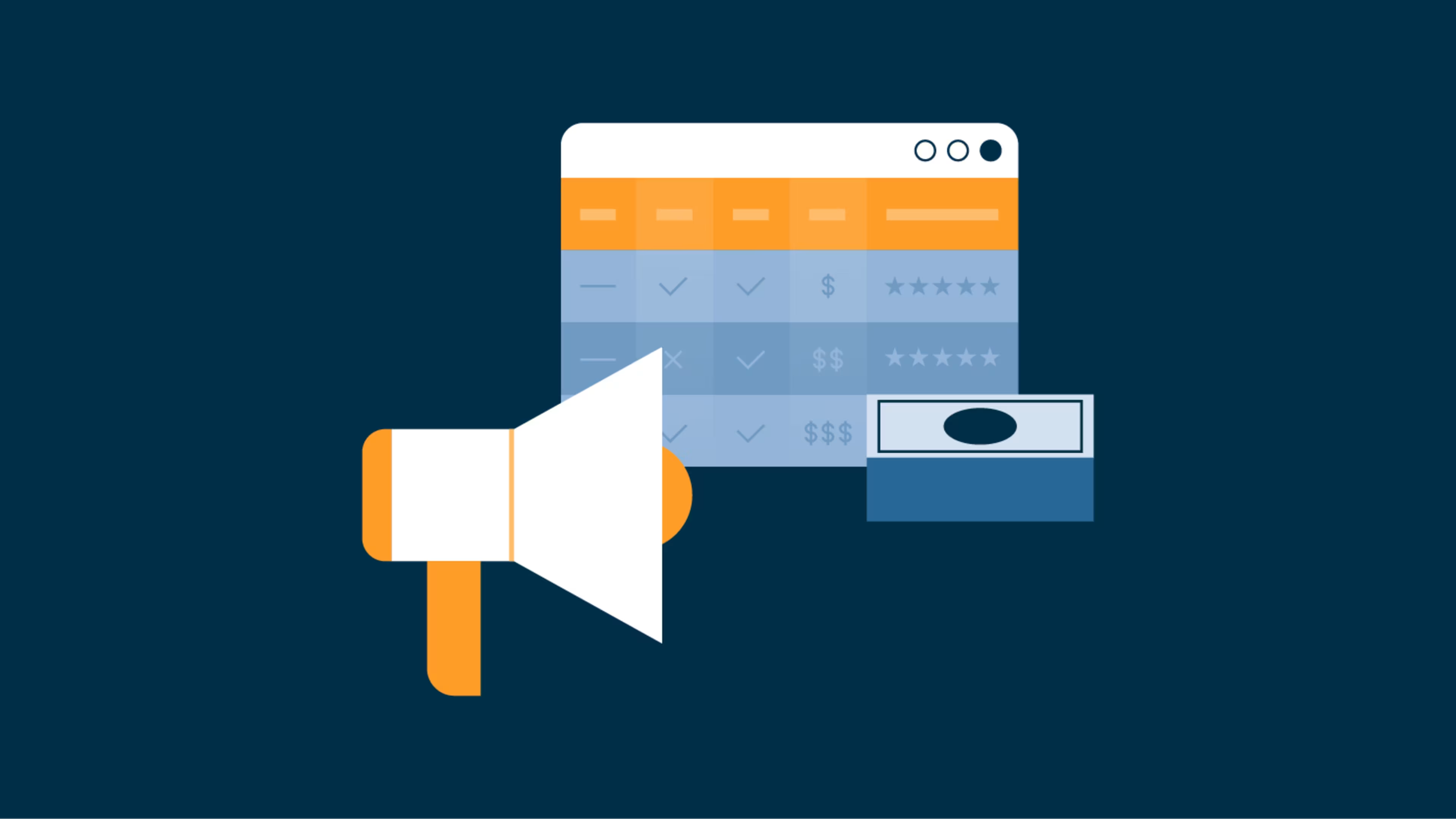Compare pricing for the top marketing software products in various categories.
The COVID-19 pandemic has posed multiple challenges for marketing leaders, and delivering success with the right marketing technology within budget is just one of those challenges.
Web analytics, email marketing, data management, digital commerce, social media management, and multichannel marketing are a few high-priority marketing technologies buyers prioritize for investment—with or without a budget cut—per Gartner research (full content available to clients.)
When it comes to software purchase, there are many factors to consider, but users consistently tell us that price is their top consideration. That’s because small businesses need to choose software that not only caters to their specific business needs but also fits their marketing budget.
Keeping this in mind, we’ve put together a pricing comparison guide to compare the prices of top-rated marketing tools from software categories such as email marketing, social media management, marketing automation, and search engine optimization (SEO). If you're looking to invest in any of these marketing solutions, this piece is for you!
Use this guide to learn how the top tools in each marketing software category are priced and how different products in the same category stack up against each other.
Common marketing software pricing models
When evaluating any marketing software, the first thing most businesses notice is the pricing structure and model. Let’s discuss some common software pricing models.
1. Subscription model
In the subscription pricing model, you pay either an annual or a monthly subscription fee to use marketing software for a specific amount of time. Depending upon the vendor, the subscription can be renewed monthly, quarterly, biannually, or annually.
This pricing model is commonly used for cloud-based deployments where the system is hosted remotely and can be accessed on compatible devices over the internet. Pricing could depend on various factors, including the number of users, contacts, emails, and social channels.
2. Pay-as-you-go model
This is a usage-based pricing model that charges customers based on how much they consume a product or service. Many cloud-based marketing platforms often deal with high-volume items such as contacts, emails, and clicks, and commonly set up the pay-as-you-go model to calculate usage to a precise level (e.g., per gigabyte of storage used or number of messages sent).
3. Perpetual license model
The perpetual license fee is mostly used for on-premise deployments and is less common in marketing tools. In this traditional pricing model, you pay an upfront license fee to own the software and use it forever.
4. Freemium model
In a free license type, software products are offered free of cost, and all the software features can be used without shelling out a single penny. However, you may have to pay for implementation, additional contacts, and integration with other modules, among others.
Hidden costs
When investing in marketing software, you should also be aware of hidden costs, which are equally important to understand but often overlooked. Let’s discuss some of these overlooked costs:
Add-on fee: Depending upon the extra modules and products you want to purchase along with the base product, you’ll have to pay an additional price for additional features.
Data migration fee: Ask the vendor about the cost of transferring your clients’ data between systems and exporting the data as files that can be imported into the new system.
Training fee: Don’t forget to account for the training fee when planning marketing software investment. Ask your vendor if you’ll have to pay for training resources such as know-how videos and webinars.
Maintenance and upgrades: Check which maintenance and support services the software vendor offers and whether they are included in your software subscription or licensing fee.
Price comparison for top-rated products in different marketing software categories
Marketing is an umbrella term, and comparing pricing for the different software categories that are part of the marketing stack can prove to be a time-consuming task.
To help you, we've created price comparison tables to highlight how different marketing products in different categories stack up against each other in terms of starting price, free trials, and free versions—allowing you to compare all these products in one place.
Let’s look into some marketing software categories and their price comparison guides:
1. Email marketing software
Email marketing software is designed to assist businesses in creating, launching, and tracking email campaigns. The software automates email communication between a business and its prospects and customers, and helps manage mailing lists, monitor marketing campaign effectiveness, and increase email marketing efficiency.
Here’s a price comparison snapshot of top-rated email marketing products:
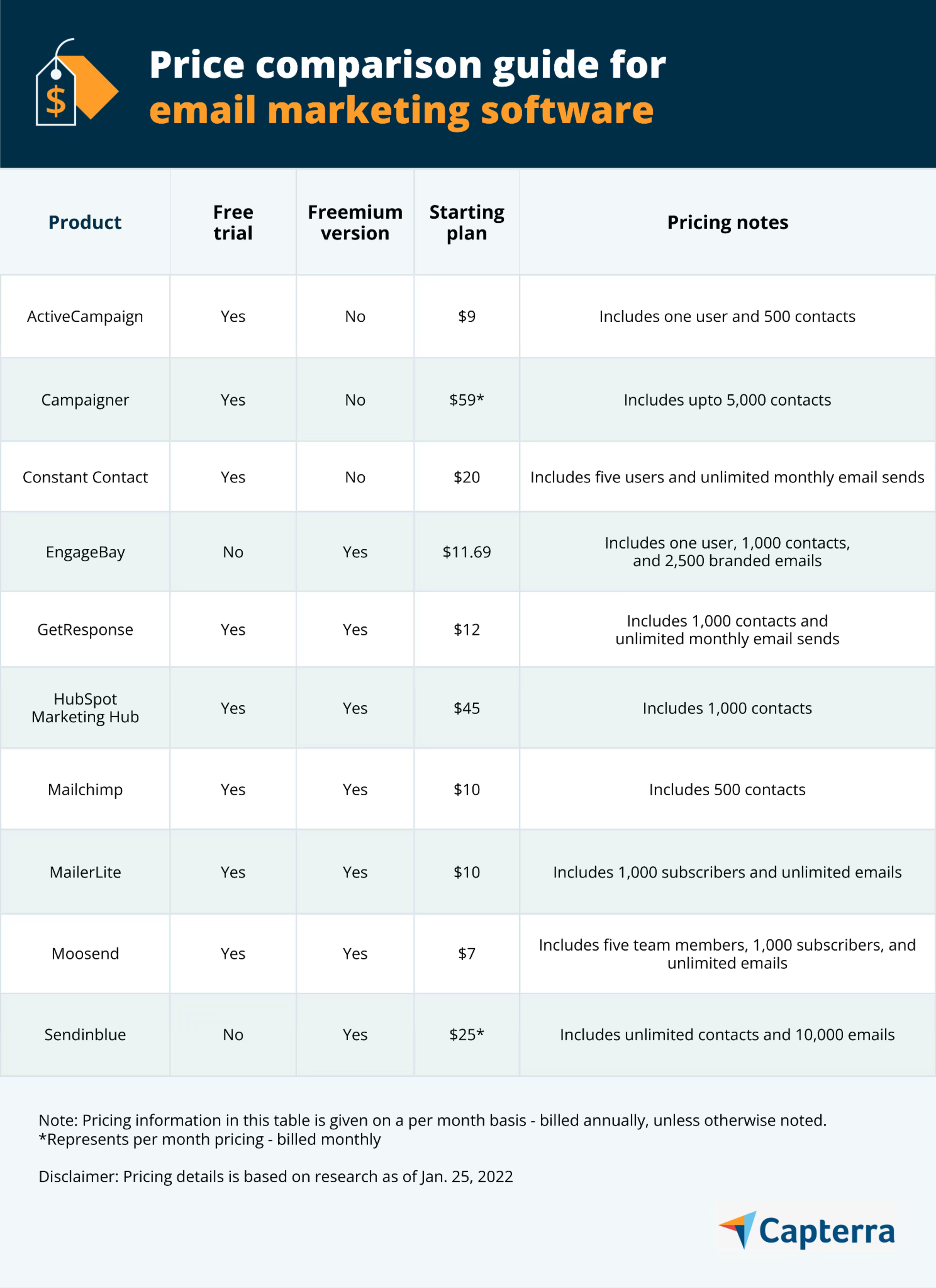
Note: The products in the above table are arranged alphabetically and the pricing included is for the entry-level/lowest-priced offering (discounted pricing not considered) found on vendor websites as of Jan. 25, 2022. The cost of these email marketing software products may vary based on the number of contacts, emails, users, or other factors.
2. Social media management software
Social media management software helps businesses publish, track, and update content on various social media channels, such as Twitter, LinkedIn, Facebook, and Pinterest.
Here’s a price comparison snapshot of top-rated social media management products:
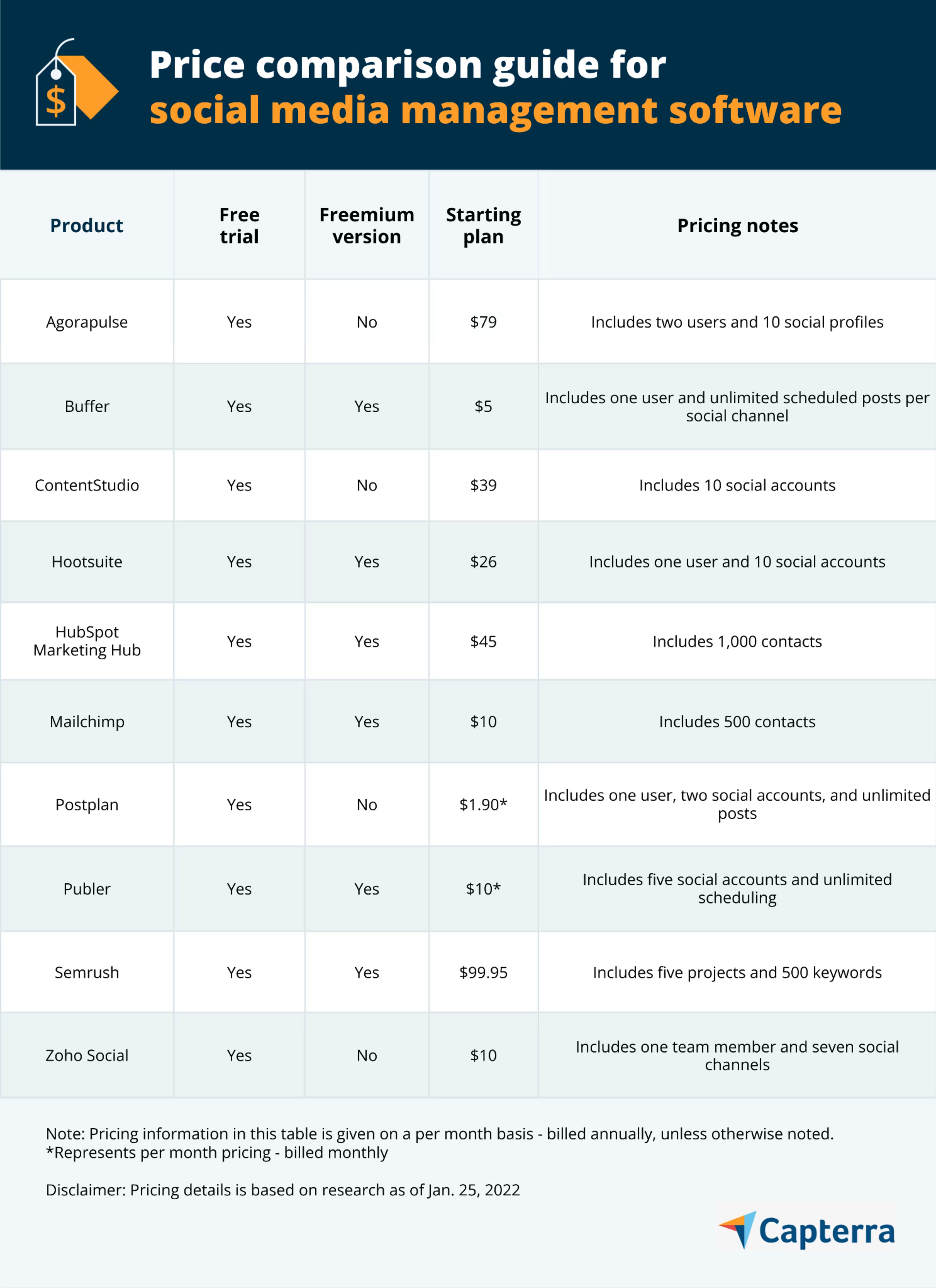
Note: The products in the above table are arranged alphabetically and the pricing included is for the entry-level/lowest-priced offering (discounted pricing not considered) found on vendor websites as of Jan. 25, 2022. The cost of these social media management software products may vary based on the number of social accounts, users, scheduled posts, or other factors.
3. Marketing automation software
Marketing automation software helps businesses automate marketing processes and allows end-to-end management of marketing campaigns—from campaign design, tracking, and content publishing to customer segmentation and marketing analytics.
Here’s a price-comparison snapshot of top-rated marketing automation products:
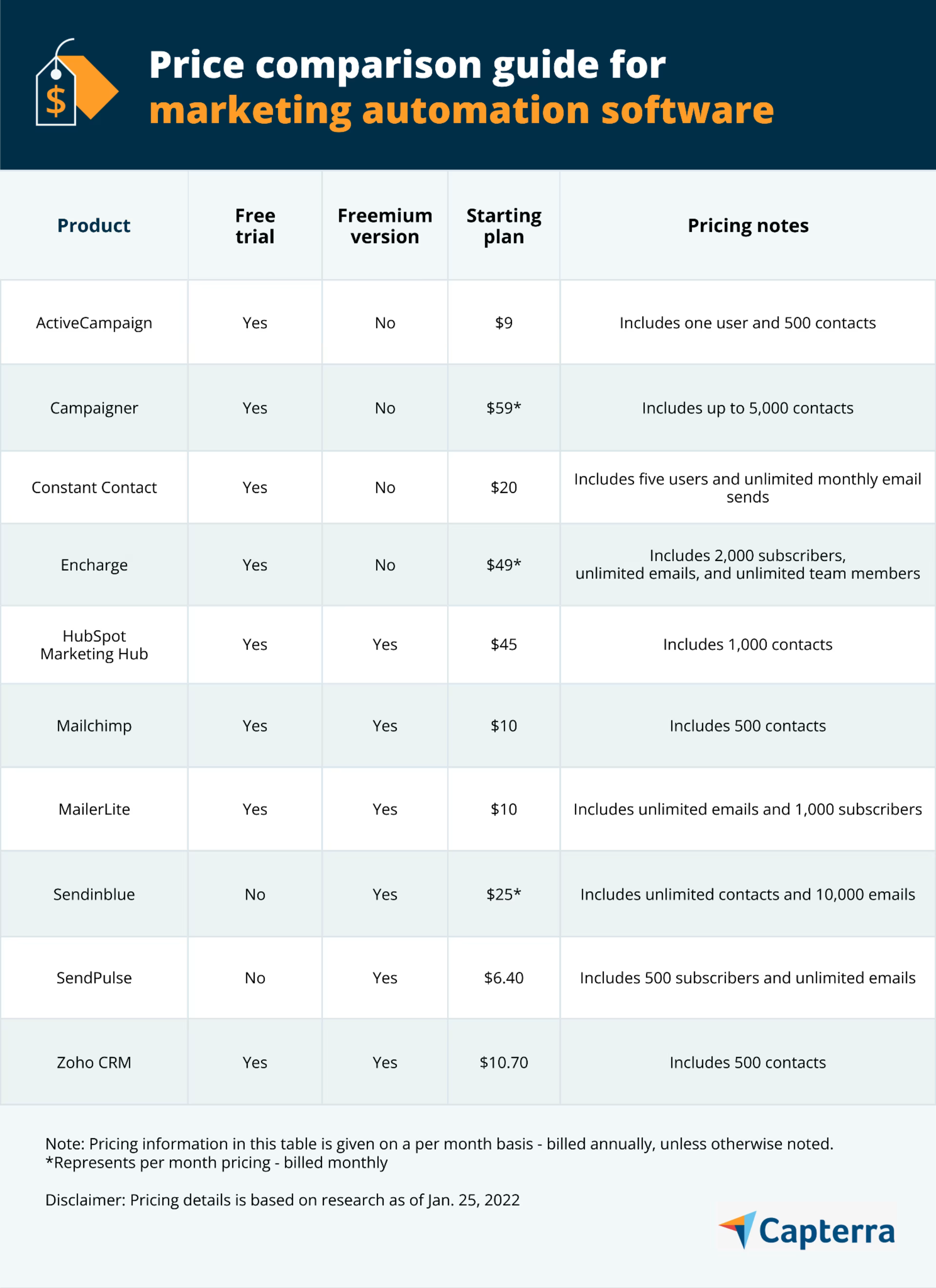
Note: The products in the above table are arranged alphabetically and the pricing included is for the entry-level/lowest-priced offering (discounted pricing not considered) found on vendor websites as of Jan. 25, 2022. The cost of these marketing automation software products may vary based on the number of users, contacts, emails, automations, or other factors.
4. SEO software
SEO software is designed to help businesses improve the ranking, traffic quality, and search relevance of their websites on search engine results pages (SERPs). It assists users in identifying and analyzing keywords, performing SEO audits, and more.
Here’s a price-comparison snapshot of top-rated SEO products:
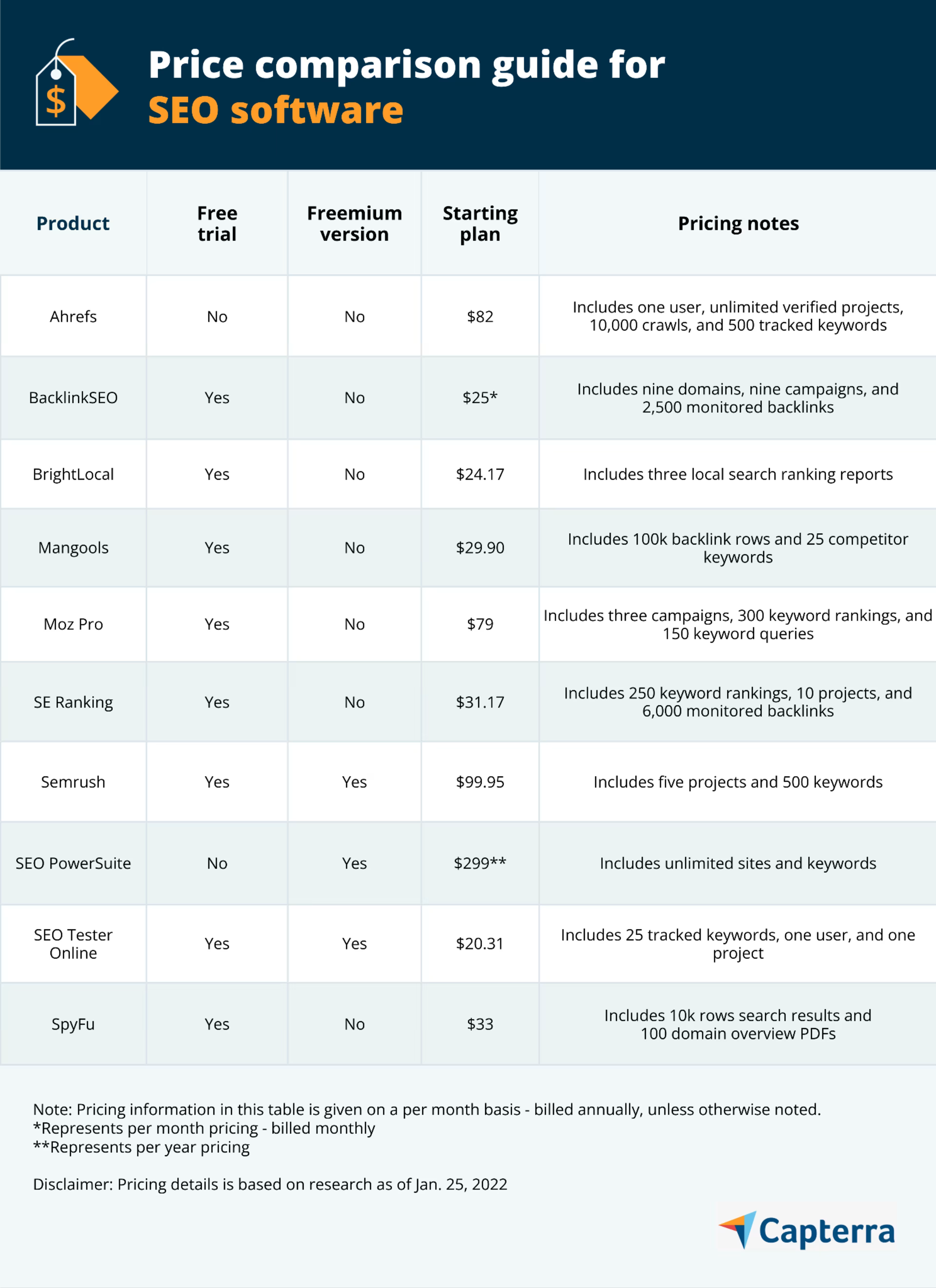
Note: The products in the above table are arranged alphabetically and the pricing included is for the entry-level/lowest-priced offering (discounted pricing not considered) found on vendor websites as of Jan. 25, 2022. The cost of these SEO software products may vary based on the number of users, crawls, keywords, monitored backlinks, or other factors.
Do the software categories and tools listed in this price comparison guide fit your marketing software budget? If yes, then you might as well compare their features and read real user reviews of over 200 similar products listed on our marketing software category page.
Common questions to help you decide how marketing software is priced
Pricing for marketing software tools depends on the type of marketing category and product you need. Various other factors also influence the cost structure. Let’s discuss some questions that can help you understand your business needs and the total cost you have to pay.
How many users/contacts are you purchasing marketing software for?
How many emails, social channels, targeted keywords, etc., do you want your marketing software to support?
What is the size of your business—solo, small, medium, or enterprise?
What type of software features do you need—basic or advanced?
Does the software offer any add-ons? If yes, which ones will you need?
Which pricing model are you comfortable with—subscription-based or pay-as-you-go?
Is free software good enough for your business needs?
Does the software involve any installation and training fees?
Based on how you answer the above questions, the same marketing platform could cost you hundreds of dollars less or thousands more.
